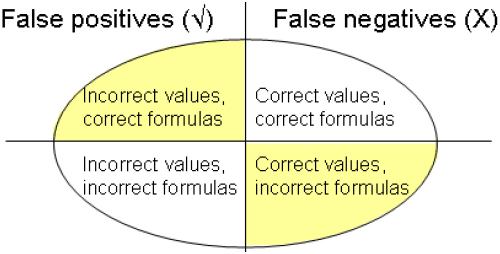Authors
Amit Phalgune, Cory Kissinger, Margaret Burnett, Curtis Cook, Laura Beckwith, & Joseph Ruthruff
Abstract
End-user programmers, because they are human, make mistakes. However, past research has not considered how visual end-user debugging devices could be designed to ameliorate the effects of mistakes.
This paper empirically examines oracle mistakes—mistakes users make about which values are right and which are wrong—to reveal differences in how different types of oracle mistakes impact the quality of visual feedback about bugs.
We then consider the implications of these empirical results for designers of end-user software engineering environments.
Sample

By definition, testing is validating output values, and the role of an oracle is to accurately judge whether the output values are correct.
During several earlier think-aloud studies we have noticed some users placing marks to communicate judgments about the correctness (or lack thereof) of the formulas (i.e., source code).
For example, even when a value was incorrect, some users checked off the cell because the formula was correct.
This type of mistake has a possible rationale behind it. Thus, we term this type of mistake as a "smart mistake" (shaded in this figure).
Publication
2005, IEEE Symposium on Visual Languages and Human-Centric Computing, September, pages 45-52
Full article
Garbage in, garbage out? An empirical look at oracle mistakes by end-user programmers
